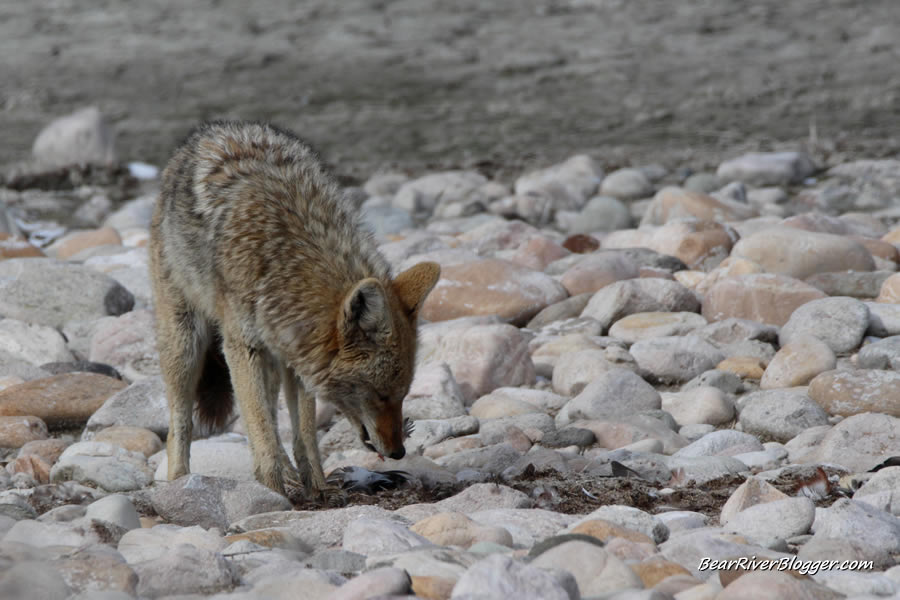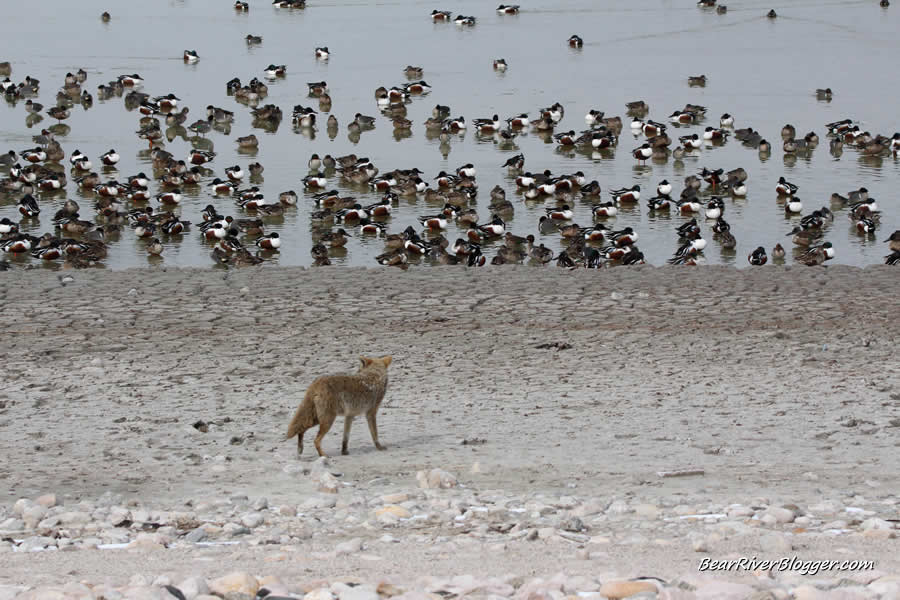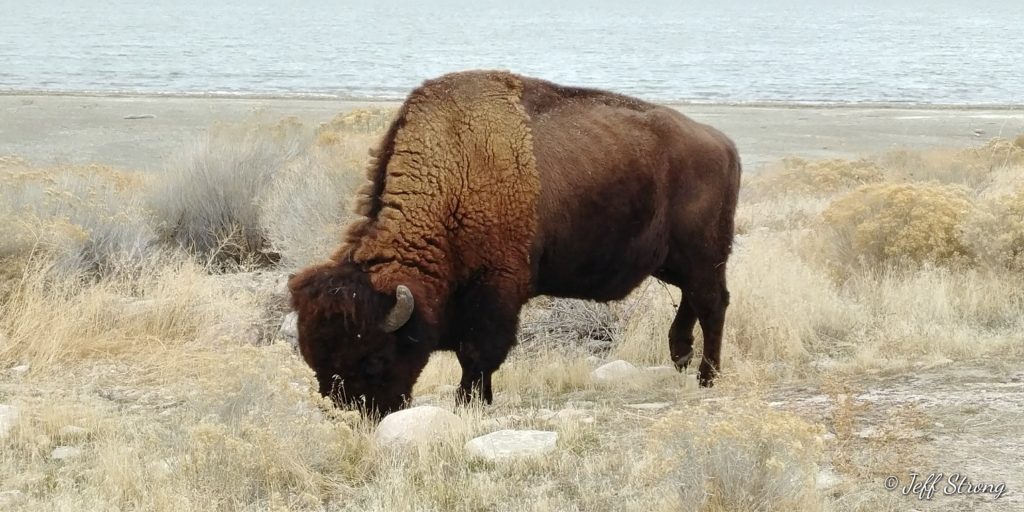I know this is mainly a blog about birds but bear with me and let’s talk about the coyote for a minute, more precisely the coyotes on Antelope Island.
There is an interesting relationship between the coyote and the large flocks of ducks that visit the Great Salt Lake during winter I found to be quite interesting while on a recent trip across the Antelope Island causeway.
The coyote, classified as both a hunter and a scavenger, is, without question, the largest predator on Antelope Island as there are no mountain lions, bobcats, or other large predators on the state park, only smaller predators such as foxes, skunks, raccoons, and the like for the coyote to compete with.
Being as such, one would think the coyote would have the run of the island and an endless supply of food, but that just isn’t the case and for good reason, I might add.
The bison, despite being quite numerous, are much too big for the coyotes to contend with, the pronghorn are definitely too fast for a coyote to catch, and there is a very limited amount of mule deer fawns in the spring for them to try and hunt so what does that leave the coyote to feed on, well, a humble offering of small birds and rodents mostly.
Not a very easy way to carve out a living by hunting such small creatures I must admit, but somehow the coyotes on Antelope Island make it work.
Fortunately for the population of coyotes on the island, the waters that border Antelope Island, particularly along the causeway, offer a little bit of a winter buffet of sorts when the conditions are right and attract the large concentrations of ducks that live on and migrate through the Great Salt Lake during fall and winter.
(Ducks On The Great Salt Lake. For short nature clips like this one and interesting stories about the natural world around us, check out our Bear River Blogger channel on YouTube for videos and updates from our travels while out in nature, both on and off of the famed Bear River Migratory Bird Refuge.)
This year was certainly no exception to this phenomenon as thousands upon thousands of ducks piled up on the Great Salt Lake just outside the Antelope Island Marina, casually feeding and loafing in the shallow salty water.
This spectacle of waterfowl not only attracted numerous bald eagles and many bird watchers, such as myself, it also attracted some of the island’s coyotes as well.
Coyotes are common on Antelope Island but a creature I rarely get to watch and photograph so when one presented itself walking up the shoreline towards the large flock of ducks, I just had to pull over and take some photos.
Slowly, the thinly built canine worked its way up the water’s edge, occasionally stopping to pick through a pile of feathers or scavenge the remains of an old carcass.
It was something to chew on I guess but I could tell what was on the coyote’s mind was more than the meager offerings of scraps already picked over by ravens and quite possibly the remnants left behind from a previous day’s meal.

From what it seemed to me, the thousands of northern shovelers and other ducks perched not-so-quietly right along the water’s edge were what held the coyote’s attention as it sulked its way closer and closer to a potential meal.
I was shocked when the coyote casually made its way towards the ducks, literally standing just a few short yards away from the large concentration of waterfowl that seemingly gave no attention to the four-legged spectator nearby.

At any moment I was expecting for the coyote to rush the flock of ducks in an attempt to grab a satisfying meal, but, well, it wasn’t to be.
Unfortunately, before the coyote could pounce, another car pulled up and the driver got out of the vehicle to take a picture of the scene at hand, abruptly scaring the coyote and sending him back down the shoreline before any action could be taken with the ducks.
But after reading another bird photographer’s blog a few days later, I am not sure the coyote was going to rush the ducks anyways.
It seems from what I saw for myself and what I read on the other blog, the coyote was looking for ducks that were easy pickings, most likely due to the yearly onset of botulism.
Each year, this disease runs rampant through birds on the Great Salt Lake and coyotes are the main benefactor of the die-offs that do occur.

I’m pretty certain the coyote I was following up the shoreline was looking for any sickly ducks it could find, knowing very well the chance of rushing a flock of healthy ducks otherwise was an exercise in futility at best.
Interestingly enough, the ducks seemed to be quite confident the coyote was not much of a threat as they paid little to no attention to the canine standing so close by.
It is quite possible the coyotes on Antelope Island have come to expect this unfortunate situation each year and regularly scavenge the lakeshore like this to take what birds they can that are affected by the disease.
Sadly, it’s a sobering sight to see coyotes so close to so much potential food nearby with thousands of ducks on the shoreline but yet they end up having to scavenge what they can on old carcasses and piles of feathers.
That particular trip to Antelope Island was a stark reminder that nature isn’t always pretty and it can be downright cruel at times.

But even so, I hope people will come to understand and respect the coyote more as an integral part of nature that oftentimes gets an unfair and bad reputation when it just isn’t warranted.
If you are a bird watcher like I am, don’t forget to head on over to our subscribe page and sign up for email notification for future blog posts as well as share our site with your birding friends.
We also have a small but growing YouTube channel we occasionally post updates about the Bear River Migratory Bird Refuge as well as short nature clips when we can capture them with our camera.



